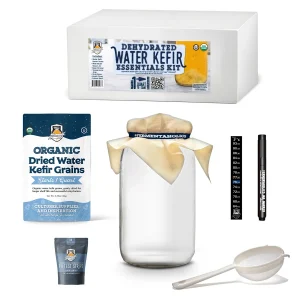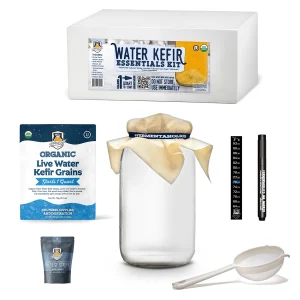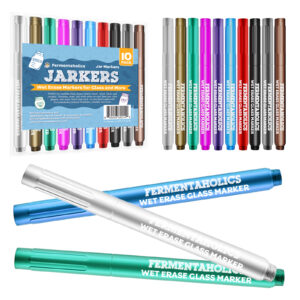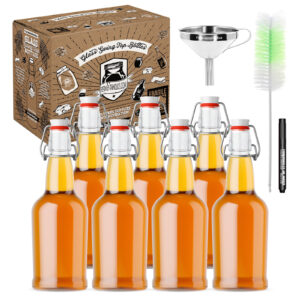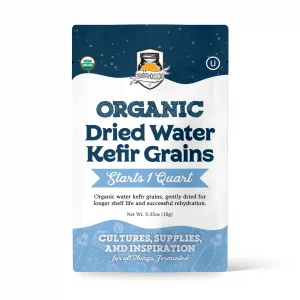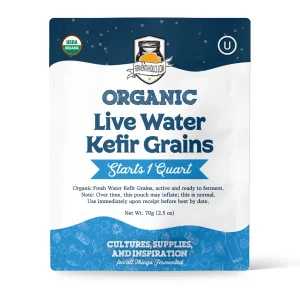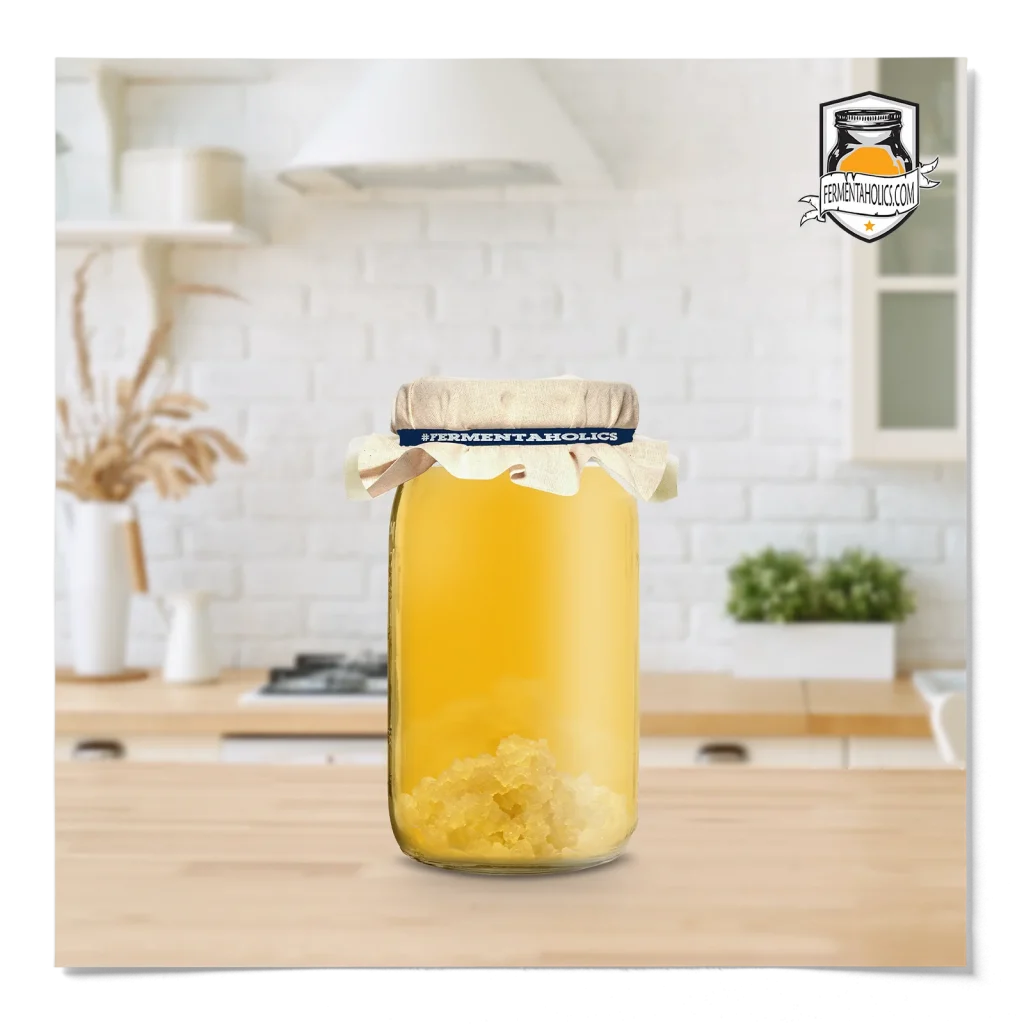
No, if you are not seeing bubbles in your water kefir batch, I wouldn’t worry, as this is nearly always a non-issue. Visible bubbles may or may not be seen in your batch of water kefir. This alone shouldn’t be used as a measure of whether or not fermentation is occurring. Read on, I’ll explain.
Not seeing bubbles during primary fermentation in water kefir is one of the most common concerns among new brewers who are still getting familiar with the process. The best piece of advice we can offer here is to always keep in mind that fermentation happens at the microbial level, and this is a process we cannot see with the naked eye.
During fermentation, there may be some things that we see in one batch that are not present in another. It’s only human nature to think that if something happens in one batch visually, then the next batch should be identical. When it comes to fermentation, this does not always apply. Appearance will vary from batch to batch.
So if you don’t see bubbles—this does not inherently mean that fermentation is not occurring. It just means that at this moment, we cannot actively see CO2 being generated, which is completely normal.
Visual indicators during water kefir fermentation—like bubbling, cloudiness, or grain movement—can be helpful, but they’re far from reliable. You might see fizz in one batch and none in the next, even if both are fermenting along just fine. It’s a mistake to assume that just because you don’t see a certain sign, the opposite must be true—that nothing’s happening. Fermentation is a microbial process, and microbes don’t care what your jar looks like from the outside.
At the microbial level, there’s an entire world of activity unfolding that the naked eye simply can’t detect. Unless your eyeballs are microscopes, interpreting fermentation based on visuals alone is largely a fool’s task. The good news is that we don’t need to rely on visuals.

Well? We’ve got science on our side. The answer is pH readings. pH readings allow a scientific way to track fermentation. They give us a concrete, measurable way to monitor fermentation. Not to mention, they remove the guesswork entirely.
To do so, we just need to start by taking a pH reading at the beginning of fermentation. So, you need to pick up some pH test strips. Then, after preparing your batch—if you need these instructions, head over here: How to Make Water Kefir—after you have added your water kefir grains and given it a good stir, we need to test the pH. This is our initial reading. It tells us our starting point, and we will need to refer back to this later.
You’ll want to write this number down—I use wet-erase glass markers to write directly onto the fermentation jar.
Then, at a later date, if I’m ever skeptical anything is happening, I just take another reading—on day two, for example (or whenever you’re checking progress). Now we have a second reading. Simply compare the original pH to the current pH.
If the pH value has dropped—for example, we started at pH 6 and now it’s pH 4—the batch is fermenting, plain and simple. How do we know this? During water kefir fermentation, beneficial acids are created. As the acids build within the liquid, the pH value lowers. The lower the number, the more acid is present.
By watching acidity shift over time, we’re able to see the metabolic work of the microbes in action—no bubbles required.
If you’re tired of second-guessing whether your water kefir is fermenting just because you don’t see bubbles, stop relying on guesswork and start using pH to get real answers. Pick up some pH strips and test your batch directly.
